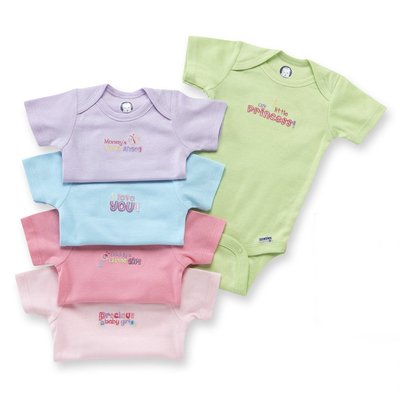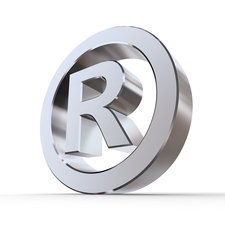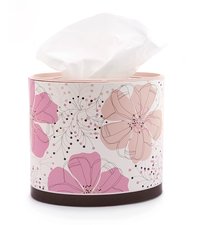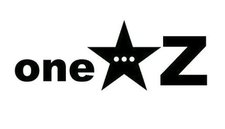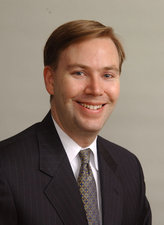Learning From Gerber's ONESIES® Trademark
Sometimes well-known trademarks are so familiar to us that they become synonymous with the products themselves. Brand names like Band-Aid, Kleenex, Spandex, Xerox and many more have entered our vocabulary, so much so that we use them to describe generic products other than the originals. When was the last time you asked for a facial tissue?
While it’s not illegal for consumers to do this in everyday speech, it can be a big problem for companies who use a well-known trademark, perhaps without realizing that it is a registered trademark, to describe their own products. I think the most commonly misused trademark in the children’s apparel industry is ONESIES®. Believe it or not, ONESIES® is a registered trademark that belongs to Gerber Childrenswear LLC,1 which is why it did not surprise me to learn that in early September Gerber filed a lawsuit against Tonny Sorensen and California Christiania Republic, LLC (“CCR”),2 for selling children’s apparel under the brand name “oneZ” and with a similar logo.3
What is a Trademark and Why is it Important to You?
A trademark identifies the source of a product. It can be a word, a symbol or a combination of words and symbols. It can even be a sound.4 You’ve heard the “bing, bong, bing” sound associated with NBC Television. Yes, that too is trademarked. (By the way, a service mark, like a trademark, identifies the provider of a service.)Trademarks allow consumers to expect a consistent level of satisfaction with a product, which helps when making buying decisions and recommending the avoidance of undesirable brands. To protect this predictable consumer experience, trademarks are protected by law. To avoid consumer confusion as to the source of a product, companies cannot offer their products under their competitors’ trademarks.
This consumer protection benefits the trademark owners because their competitors cannot benefit from the trademark owner’s investment in its brand. For example, if you spend time and money to promote your brand and ensure your product maintains a fixed quality level, I cannot sell an inferior, competitive, product under a similar trademark that would mislead consumers into thinking that my product is made by you.
How Close Must Trademarks Be to Infringe?
The question of trademark infringement is really one of consumer confusion. Would the average consumer seeing the newer mark on a competitor’s product be fooled into believing that the owner of the older trademark is the source of the competitor’s product? So the essence of the test for trademark infringement has always been tested by similarity in sound, sight and meaning –– the “trilogy.” Are the senior and junior marks similar in: (i) appearance; (ii) pronunciation; and (iii) meaning.5
The trilogy remains central to the test for trademark infringement, but other factors are considered, including:- are the products sold in the same channels of distribution?;
- will prospective purchasers be careful in their selection of the product?;6
- is the mark highly distinctive?;
- are the products related?;
- did the alleged infringer intentionally use a similar mark?; and
- is there evidence of actual consumer confusion?
The ONESIES® Case:
If you are selected as a juror for the ONESIES® case, would you find an infringement? Consider these issues:
- First, does “oneZ” look and/or sound like Gerber’s ONESIES® trademark?
- Second, are both products sold in similar stores?
- Third, how careful are consumers of one-piece infant garments likely to be in making a purchasing decision?
- Fourth, how distinctive is ONESIES® as a trademark?
- Fifth, did the defendant know of the ONESIES® trademark and hope to gain some advantage by using a similar mark on its products?
- Sixth, have any consumers actually been confused by seeing the “oneZ” mark or hearing “oneZ” while thinking they were purchasing Gerber’s one-piece infant apparel?
Is ONESIES® Still a Source Identifier, or Has it Become Generic?
Having a super popular trademark has its own problems. Sure, many consumers think of “onesies” when going to buy one-piece infant’s garments, but do they associate that with Gerber, or merely with a generic article of clothing? This is not just a marketing problem for Gerber, it’s a legal problem. Gerber’s ONESIES® trademark could be cancelled if it is commonly used to describe a one-piece garment for infants. Reason: Trademark law prohibits the use of generic terms.Several companies have faced this conundrum when a trademark becomes so well-known that people use it to describe the product itself (Bayer® would prefer that you take its Aspirin brand pain relief medicine for headaches), or worse, becomes a verb to describe the product’s function (“I’ll Xerox® this article for you”). Check out a list of several genericized trademarks on Wikipedia®.
Sorensen and CCR might assert that ONESIES® has become generic, thus preventing Gerber from asserting any trademark rights. They could conduct a survey to see how many consumers believe that “onesies” refers to a one-piece garment for infants. If enough people are not aware that ONESIES® is a trademark, they could succeed in canceling Gerber’s trademark and, thus, avoid any liability in the lawsuit.
What Does This Mean for You?
If you have a well-established trademark, be sure that you use it properly. Trademark and other intellectual property rights can be valuable. Most big companies with highly recognized trademarks are careful not to use their trademarks generically, and control how licensees use their marks. Smaller companies should focus on their trademarks too, even though they typically do not run into the problem of cancellation due to generic use. Sometimes even big companies lose sight of their trademarks, which can lead to cancellation for generic use. If you don’t believe me, you can Google® it.
— Footnotes —
1 U.S. Trademark Registration No. 2,549,5572 South Carolina District Court, Greenville Division, Docket No. 6:11-cv-02361.
3 oneZ logo (seen at right)
4 National Broadcasting Company, Inc., has a trademark described as “a sequence of chime-like musical notes which are in the key of c and sound the notes g, e, c, the “g” being the one just below middle c, the “e” the one just above middle c, and the “c” being middle c, thereby to identify applicant’s broadcasting service.” Reg. No. 0916522.
5 Trademarks can sound the same while being visually different. This happens when a mark is made up of phonetic spelling (Citi instead of City), and also occurs when numbers are spelled out (First instead of 1st). Trademarks can look different while having the same meaning (the Elephant Bar could spell out the word “elephant” or use an image of an elephant for its trademark).
6 The more expensive the product, the higher the level of care in selection.
Jeremy D. Richardson is an attorney on the fashion industry team at Phillips Nizer. His practice involves representing clients in the children’s apparel, accessories and furniture industries. In April 2005, Jeremy was appointed to the Executive Committee of the American Apparel & Footwear Associations’ (AAFA) Product Safety Council, which most recently has focused its energies on educating its members about the Consumer Product Safety Improvement Act (CPSIA) of 2008.
Jeremy guides start-ups and entrepreneurs through protection of their intellectual property, negotiation of partnerships, and when necessary, the litigation of matters that cannot otherwise be resolved. He has argued before the Second Circuit Court of Appeals and has been admitted pro hac vice to practice in the California Superior Court.
About Phillips Nizer
Phillips Nizer LLP has been engaged in a wide-ranging practice of domestic and international law for over 80 years. Established in 1926 by Louis Phillips, former Assistant General Counsel to Paramount Motion Pictures, and Louis Nizer, considered one of the most outstanding trial lawyers of the twentieth century, the firm consists of lawyers who are well-respected leaders in their fields. Our bond with the fashion and apparel industries began in the 1940s, a relationship that continues to this day almost 60 years later. Our principal office is in New York City, with additional offices in Garden City, Long Island and Hackensack, New Jersey. For more information about Phillips Nizer LLP, please visit: http://www.phillipsnizer.com/
